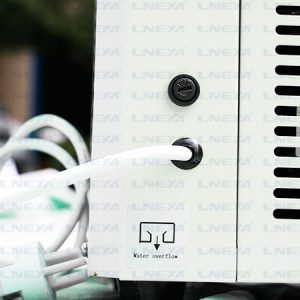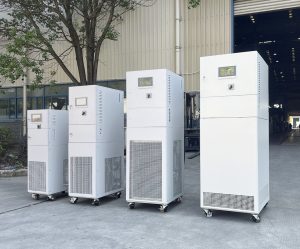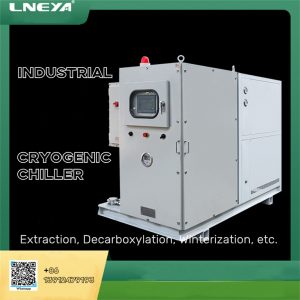Quel type de refroidisseur est nécessaire pour la gravure à basse température ?
The low-temperature etching process usually requires extremely high precision temperature control and strong cooling ability to maintain stable operation of the etching equipment at extremely low temperatures, in order to achieve finer etching effects and optimize the performance of semiconductor devices.
For this requirement, the applicable types of coolers mainly include:
Multi channel chiller: A chiller with multiple independent temperature control circuits that can accurately control the temperature of different parts, ensuring uniform and stable temperature throughout the entire system. This is particularly important for complex etching equipment that requires maintaining different temperatures in different regions.
Low temperature chiller: This type of cooler is designed to generate and maintain extremely low temperatures, providing cooling capacity from ambient temperature to far below freezing point, suitable for low-temperature etching process requirements such as -70℃.
Closed loop refrigeration system: The closed loop system can more effectively control temperature and reduce energy consumption, suitable for etching processes that require long-term stable low-temperature operation, while reducing the impact on the external environment.
Semiconductor specific chillers: These chillers are customized to meet the needs of the semiconductor industry and have characteristics such as high-precision temperature control, fast response, low vibration, and low noise. Some are also designed with special material heat exchangers to cope with corrosive environments.
Handheld low-temperature chiller: Although not as widely used in production lines as large chillers, handheld low-temperature coolers may also be adopted in certain specific local low-temperature control or portable application scenarios due to their flexible and convenient advantages.
Therefore, the chiller used must not only achieve the required low temperature, but also be compatible and capable of handling cooling media under such special working conditions, while also having good corrosion resistance. When choosing a cooler, factors such as energy efficiency, ease of maintenance, level of intelligent control system, and ease of integration into existing production lines should also be considered.
Customization of chiller solutions
Recommandations connexes
-
Quel type de refroidisseur peut-on choisir pour refroidir la XRD ?
1090Quel type de refroidisseur pour le refroidissement de la XRD ?
Voir les détails -
Talk about the main points of choice for circulating water chiller in laboratory
965Circulating water cooler is also called chiller. It is a kind of cooling water equipment that can provide constant temperature, constant flow and constant pressure. Currently there are many kinds of chillers in the market. How to buy a suitable ch...
Voir les détails -
Où avez-vous besoin de refroidisseurs d'eau antidéflagrants ?
877Explosion-proof refrigeration unit water chillers (explosion-proof chillers) are mainly used in environments with explosion risks to ensure the safety and reliability of the cooling process. This type of equipment is specially designed to ...
Voir les détails -
Knowledge Sharing Of Chiller Selection And Maintenance
1164Chillers can be used in a lot of industry, but who is the better low temperature chiller manufacturer in top chiller manufacturers?Let me tell you. The choice of own model and the maintenance are also very important. Next, see with me. 1. Range of...
Voir les détails -
Several elements of the operation of -20 degree industrial cryogenic chiller
1266-20 degree industrial cryogenic chiller is a refrigeration equipment that provides low temperature chilled water. It is often used in production enterprises, such as chemical companies, pharmaceutical companies and other production processes, to p...
Voir les détails
 LNEYA Industrial Chillers Fabricant Fournisseur
LNEYA Industrial Chillers Fabricant Fournisseur















